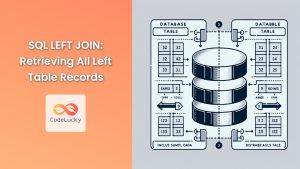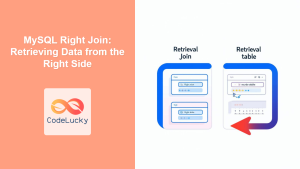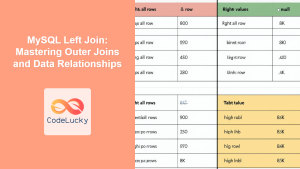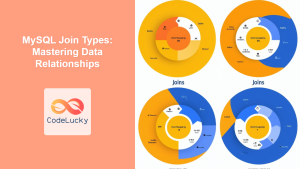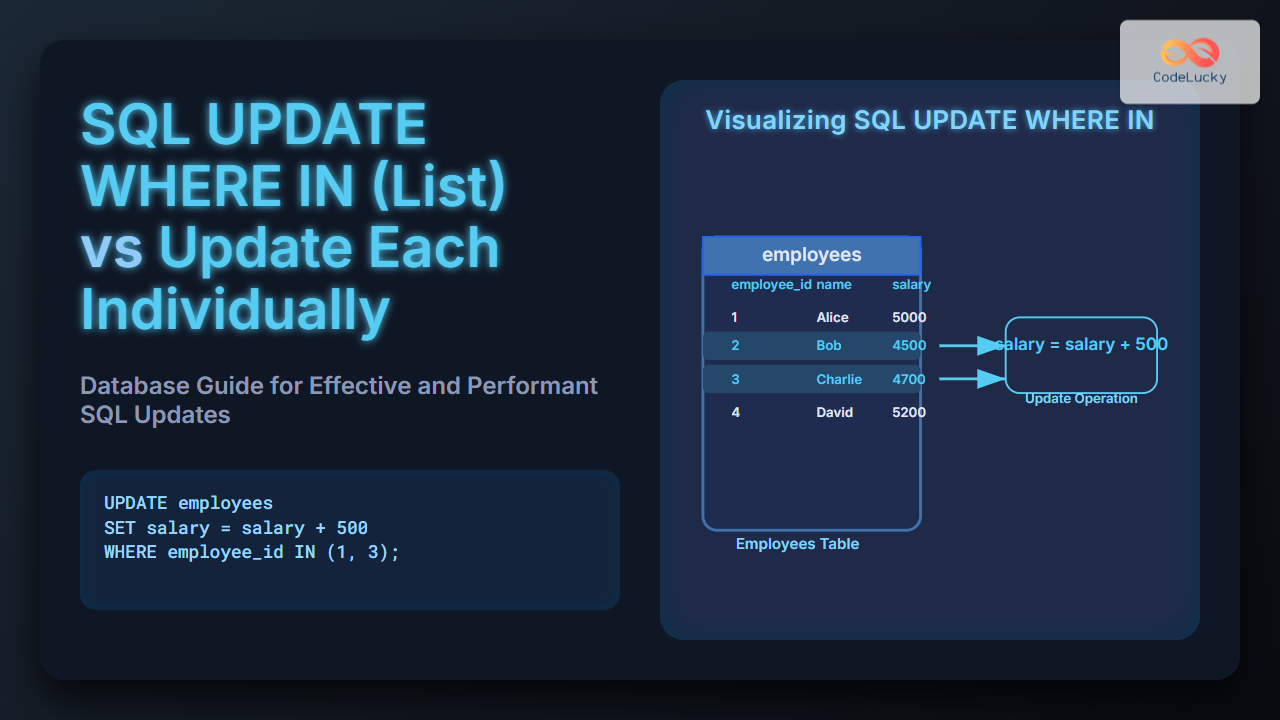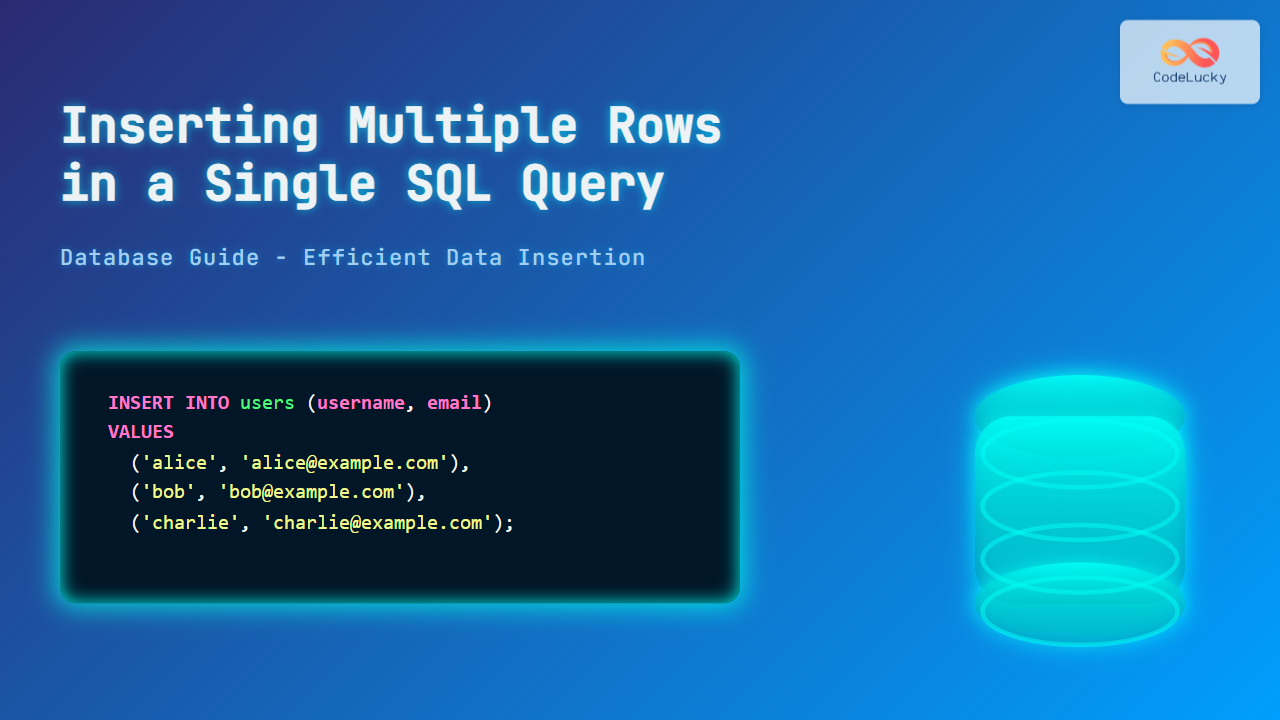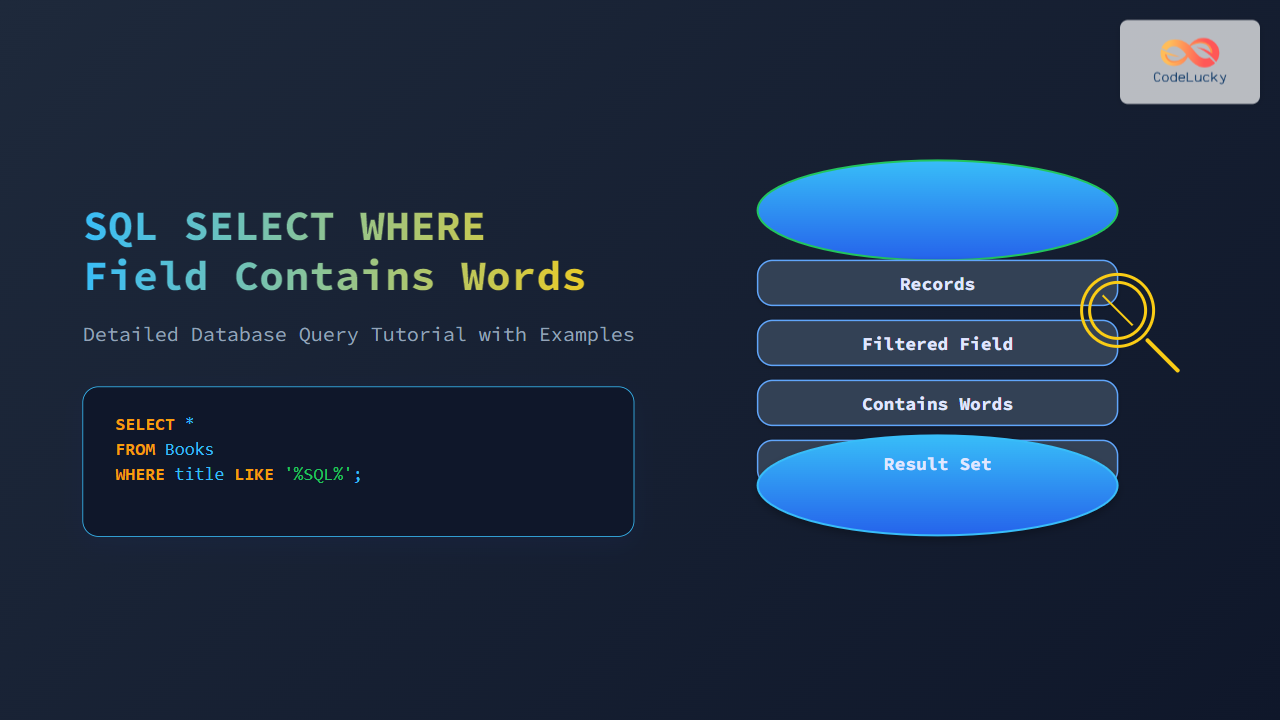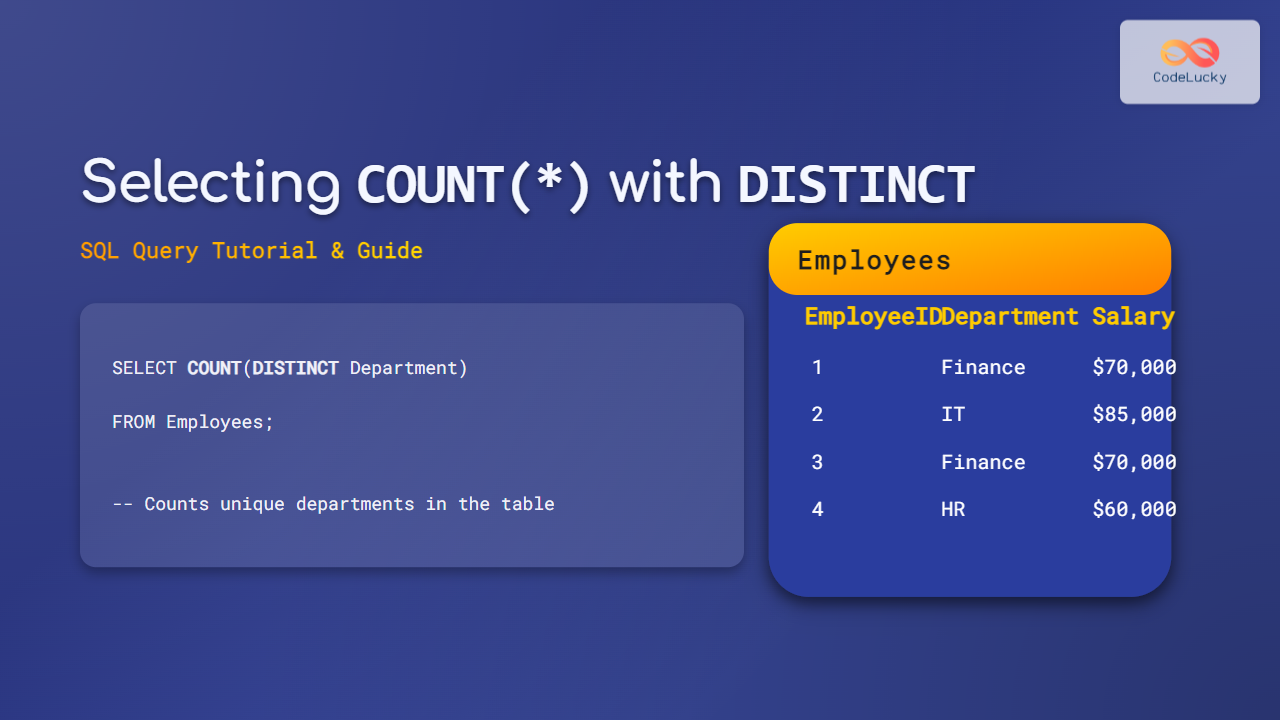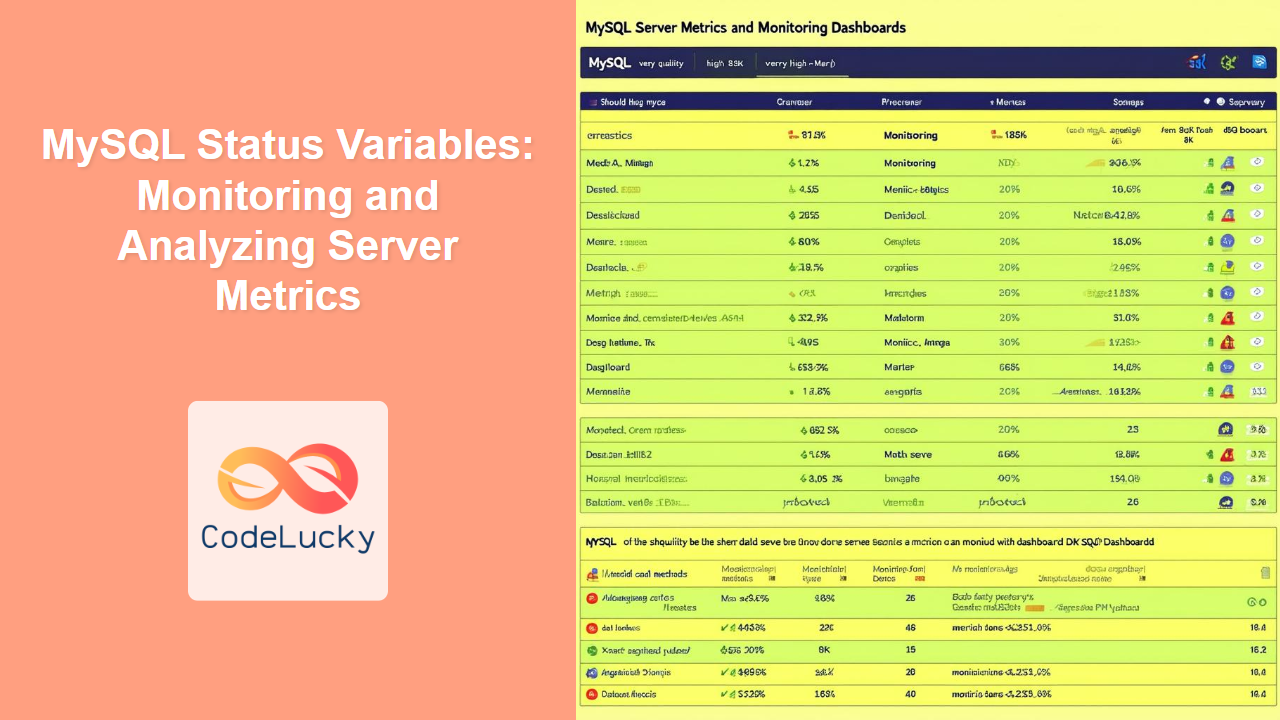SQL joins are powerful tools for combining data from multiple tables, and the RIGHT JOIN is a particularly useful variant that every database developer should master. In this comprehensive guide, we'll dive deep into the intricacies of the SQL RIGHT JOIN, exploring its syntax, use cases, and providing numerous practical examples to solidify your understanding.
Understanding the SQL RIGHT JOIN
The RIGHT JOIN, also known as RIGHT OUTER JOIN in some database systems, is a type of outer join that returns all records from the right table (the table mentioned after the JOIN keyword) and the matched records from the left table. If there are no matching records in the left table, the result will contain NULL values for the left table's columns.
🔑 Key Point: The RIGHT JOIN ensures that all records from the right table are included in the result set, regardless of whether they have matching records in the left table.
RIGHT JOIN Syntax
The basic syntax for a RIGHT JOIN is as follows:
SELECT column_list
FROM table1
RIGHT JOIN table2
ON table1.column = table2.column;
Here, table2 is the right table, and table1 is the left table. The join condition is specified after the ON keyword.
Practical Examples of RIGHT JOIN
Let's explore some real-world scenarios where RIGHT JOIN can be incredibly useful. We'll use a fictional database for an online bookstore to illustrate these examples.
Example 1: Finding All Authors, Even Those Without Books
Imagine we have two tables: authors and books. We want to list all authors, including those who haven't published any books yet.
CREATE TABLE authors (
author_id INT PRIMARY KEY,
author_name VARCHAR(100)
);
CREATE TABLE books (
book_id INT PRIMARY KEY,
title VARCHAR(200),
author_id INT,
FOREIGN KEY (author_id) REFERENCES authors(author_id)
);
INSERT INTO authors (author_id, author_name) VALUES
(1, 'J.K. Rowling'),
(2, 'George Orwell'),
(3, 'Jane Austen'),
(4, 'Ernest Hemingway'),
(5, 'Virginia Woolf');
INSERT INTO books (book_id, title, author_id) VALUES
(101, 'Harry Potter and the Philosopher''s Stone', 1),
(102, '1984', 2),
(103, 'Animal Farm', 2),
(104, 'Pride and Prejudice', 3),
(105, 'The Old Man and the Sea', 4);
Now, let's use a RIGHT JOIN to list all authors, even those without books:
SELECT a.author_name, b.title
FROM books b
RIGHT JOIN authors a ON b.author_id = a.author_id;
Result:
| author_name | title |
|---|---|
| J.K. Rowling | Harry Potter and the Philosopher's Stone |
| George Orwell | 1984 |
| George Orwell | Animal Farm |
| Jane Austen | Pride and Prejudice |
| Ernest Hemingway | The Old Man and the Sea |
| Virginia Woolf | NULL |
📊 As we can see, Virginia Woolf is included in the result set even though she doesn't have any books in our books table.
Example 2: Inventory Management
Let's consider a scenario where we're managing inventory for our bookstore. We have a products table and an inventory table.
CREATE TABLE products (
product_id INT PRIMARY KEY,
product_name VARCHAR(100),
category VARCHAR(50)
);
CREATE TABLE inventory (
inventory_id INT PRIMARY KEY,
product_id INT,
quantity INT,
FOREIGN KEY (product_id) REFERENCES products(product_id)
);
INSERT INTO products (product_id, product_name, category) VALUES
(1, 'Hardcover Book', 'Books'),
(2, 'Paperback Book', 'Books'),
(3, 'E-reader', 'Electronics'),
(4, 'Bookmark', 'Accessories'),
(5, 'Reading Lamp', 'Accessories');
INSERT INTO inventory (inventory_id, product_id, quantity) VALUES
(1, 1, 100),
(2, 2, 150),
(3, 3, 50);
We want to list all products, including those not in inventory:
SELECT p.product_name, p.category, COALESCE(i.quantity, 0) AS stock
FROM inventory i
RIGHT JOIN products p ON i.product_id = p.product_id;
Result:
| product_name | category | stock |
|---|---|---|
| Hardcover Book | Books | 100 |
| Paperback Book | Books | 150 |
| E-reader | Electronics | 50 |
| Bookmark | Accessories | 0 |
| Reading Lamp | Accessories | 0 |
🔍 Note: We used the COALESCE function to replace NULL values with 0 for products not in inventory.
Example 3: Customer Orders Analysis
Let's analyze customer orders, including customers who haven't placed any orders yet.
CREATE TABLE customers (
customer_id INT PRIMARY KEY,
customer_name VARCHAR(100),
email VARCHAR(100)
);
CREATE TABLE orders (
order_id INT PRIMARY KEY,
customer_id INT,
order_date DATE,
total_amount DECIMAL(10, 2),
FOREIGN KEY (customer_id) REFERENCES customers(customer_id)
);
INSERT INTO customers (customer_id, customer_name, email) VALUES
(1, 'Alice Johnson', 'alice@email.com'),
(2, 'Bob Smith', 'bob@email.com'),
(3, 'Charlie Brown', 'charlie@email.com'),
(4, 'Diana Ross', 'diana@email.com'),
(5, 'Edward Norton', 'edward@email.com');
INSERT INTO orders (order_id, customer_id, order_date, total_amount) VALUES
(1001, 1, '2023-01-15', 50.00),
(1002, 2, '2023-02-01', 75.50),
(1003, 1, '2023-02-10', 30.25),
(1004, 3, '2023-03-05', 100.00);
Now, let's use a RIGHT JOIN to list all customers and their orders:
SELECT c.customer_name, c.email,
COALESCE(o.order_id, 'No orders') AS order_id,
COALESCE(o.order_date::TEXT, 'N/A') AS order_date,
COALESCE(o.total_amount::TEXT, 'N/A') AS total_amount
FROM orders o
RIGHT JOIN customers c ON o.customer_id = c.customer_id
ORDER BY c.customer_name;
Result:
| customer_name | order_id | order_date | total_amount | |
|---|---|---|---|---|
| Alice Johnson | [email protected] | 1001 | 2023-01-15 | 50.00 |
| Alice Johnson | [email protected] | 1003 | 2023-02-10 | 30.25 |
| Bob Smith | [email protected] | 1002 | 2023-02-01 | 75.50 |
| Charlie Brown | [email protected] | 1004 | 2023-03-05 | 100.00 |
| Diana Ross | [email protected] | No orders | N/A | N/A |
| Edward Norton | [email protected] | No orders | N/A | N/A |
💡 This query provides a comprehensive view of all customers, including those who haven't placed any orders yet.
Advanced RIGHT JOIN Techniques
Combining RIGHT JOIN with Aggregation
We can combine RIGHT JOIN with aggregation functions to get more insightful results. Let's calculate the total amount spent by each customer:
SELECT c.customer_name, c.email,
COUNT(o.order_id) AS order_count,
COALESCE(SUM(o.total_amount), 0) AS total_spent
FROM orders o
RIGHT JOIN customers c ON o.customer_id = c.customer_id
GROUP BY c.customer_id, c.customer_name, c.email
ORDER BY total_spent DESC;
Result:
| customer_name | order_count | total_spent | |
|---|---|---|---|
| Charlie Brown | [email protected] | 1 | 100.00 |
| Bob Smith | [email protected] | 1 | 75.50 |
| Alice Johnson | [email protected] | 2 | 80.25 |
| Diana Ross | [email protected] | 0 | 0.00 |
| Edward Norton | [email protected] | 0 | 0.00 |
🎯 This query provides a quick overview of customer spending patterns, including those who haven't made any purchases.
Using RIGHT JOIN with Subqueries
RIGHT JOIN can also be used with subqueries to create more complex and powerful queries. Let's find out which products have never been ordered:
CREATE TABLE order_items (
item_id INT PRIMARY KEY,
order_id INT,
product_id INT,
quantity INT,
FOREIGN KEY (order_id) REFERENCES orders(order_id),
FOREIGN KEY (product_id) REFERENCES products(product_id)
);
INSERT INTO order_items (item_id, order_id, product_id, quantity) VALUES
(1, 1001, 1, 2),
(2, 1002, 2, 1),
(3, 1003, 3, 1),
(4, 1004, 1, 3);
SELECT p.product_name, p.category,
CASE WHEN oi.product_id IS NULL THEN 'Never ordered'
ELSE 'Ordered' END AS order_status
FROM (SELECT DISTINCT product_id FROM order_items) oi
RIGHT JOIN products p ON oi.product_id = p.product_id;
Result:
| product_name | category | order_status |
|---|---|---|
| Hardcover Book | Books | Ordered |
| Paperback Book | Books | Ordered |
| E-reader | Electronics | Ordered |
| Bookmark | Accessories | Never ordered |
| Reading Lamp | Accessories | Never ordered |
🔍 This query helps identify products that may need marketing attention or could potentially be discontinued.
Common Pitfalls and Best Practices
When using RIGHT JOIN, keep these points in mind:
-
Table Order Matters: Unlike INNER JOIN, the order of tables in a RIGHT JOIN is crucial. Swapping the table order will produce different results.
-
NULL Handling: Always consider how to handle NULL values in your result set. Functions like COALESCE or IFNULL can be useful.
-
Performance: RIGHT JOINs can be less performant than LEFT JOINs in some database systems. If possible, consider rewriting your query using a LEFT JOIN by swapping the table order.
-
Readability: While RIGHT JOINs are powerful, they can sometimes make queries less intuitive to read. Consider using comments to explain the logic if the query is complex.
Conclusion
The SQL RIGHT JOIN is a powerful tool for data analysis and reporting, especially when you need to ensure all records from a particular table are included in your results. By mastering RIGHT JOIN, you can create more comprehensive queries that provide valuable insights into your data.
Remember, the key to becoming proficient with RIGHT JOIN (and SQL in general) is practice. Try creating your own scenarios and experiment with different join conditions and table structures. Happy querying! 🚀💻
I hope this comprehensive guide helps you master the SQL RIGHT JOIN! Remember to always test your queries and adapt them to your specific database system, as syntax can vary slightly between different SQL implementations.


